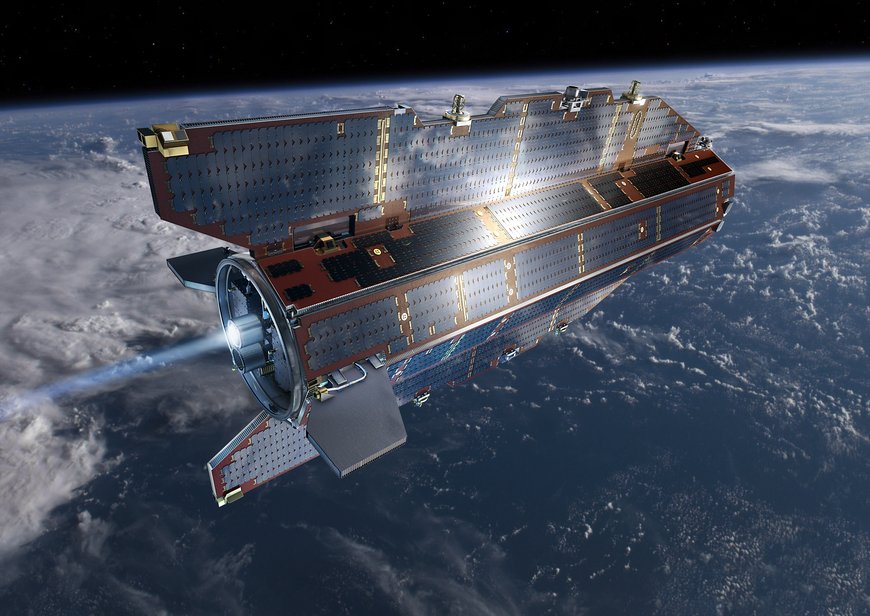Gravity Field and Steady-State Ocean Circulation Explorer (GOCE)
The Earth explorer satellite GOCE (Gravity Field and Steady-State Ocean Circulation Explorer) is the first satellite mission within the framework of the Living Planet Programme of ESA. This satellite mission is mapping the Earth's gravity field on global scales with a spatial resolution of approx. 100 km which is considerably more precise than all gravity satellite missions to date.
In this context, one of the most important scientific goals of the GOCE mission will be the study of global ocean currents. Ocean currents cause deviations of the sea-level from its equilibrium state with respect to the Earth’s gravity field. This deviations, which are commonly known as ocean topography can amount up to two metres in height. Conclusions on the ocean circulation in association with climate changes can be drawn from knowledge on the ocean topography.
Further scientific objectives of the GOCE Mission are the determination of the structure of the Earth’s crust and the mantel convection as well as the generation of a unique precise global height reference system, which is essential for the precise monitoring of the sea-level and the understanding of its changes.
The key sensor for the gravity measurement on the GOCE satellite is a gravity gradiometer, which is now flown for the first time onboard a satellite. In order to achieve the required high measuring-precision, GOCE orbits the earth at a very low altitude of approx. 250 km. Therefore the satellite is equipped with an ion propulsion engine as a so-called Drag Free Control System, which compensates the non-gravitational forces on the satellite and allows practically for flight in a pure free fall around the earth. Furthermore, GOCE is equipped for the first with a scientific GPS-receiver made in Europe, which will be used to determine the orbit position with centimetre-accuracy.
The GFZ, which looks back on many years of experience in analysis of satellite-based gravity field measurements, participates in the evaluation of GOCE data as a co-operating partner within the framework of the so called GOCE High Level Processing Facility (GOCE-HPF) under the Project Management of the Technical University Munich and together with scientific institutions from Germany, France, Denmark, Italy, Austria, Switzerland and the Netherlands.
Behalf of ESA and within the framework of the GOCE-HPF GFZ computes GOCE gravity field models by the so-called Direct Approach. Up to now (2013) releases of such GOCE gravity models have been published by ESA. These models are available to the public at the International Centre for Global Earth Models (ICGEM).
GFZ has a long tradition in the generation of high resolution Earth gravity field models from the combination of satellite and terrestrial gravity data. The computation of such models is routinely done in close cooperation with the French Groupe de Recherche de Geodesie Spatiale (Toulouse) within the framework of the EIGEN processing activities (EIGEN = European Improved Gravity model of the Earth by New techniques). In 2011 GFZ and GRGS published the very first combined global gravity field model containing GOCE data. This model called EIGEN-6C is a spherical harmonic coefficient data set up to degree and order 1420 which corresponds to a spatial resolution of about 12 km on the Earth surface. Recently an update of this model called EIGEN-6C2 has been released. Both models are available at the ICGEM data base.


